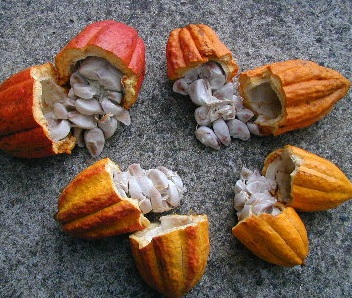"I have been reading about bacteria and pathogen content on the shells of raw cocoa beans, and commercial techniques used to prevent them from transferring into chocolate. Would there be any benefit for home and small artisan chocolate makers to using practices like misting beans with water at the end of roasting, or maintaining a certain temperature during conching and refining?"
The short answer here in no.
Now I’ll explain why. There can indeed be bacteria and pathogens on cocoa. The two that come up the most often are e. coli and Salmonella. And it’s true, it is basically restricted to the outside of the shell. And both of these are killed relatively easily, and happens ‘naturally’ during a roast.
First, let us look at what we are trying to accomplish. In a word, it is sterilization. There are a many ways to approach this, and it’s been well documented. In short, you can have low, long heat, or higher heat for a shorter time. If you plot these various combinations, you get what is called a kill curve. Each organism has a particular kill curve. As mentioned, e. coli and salmonella have relatively mild kill curves.
One of the hardest to kill is the spore of Geobacillus stearothermophilus. This is what most methods use as their indicator of sterilization, with the train of thought being that if you can kill the Geobacillus stearothermophilus spore, nothing else can survive.
A widely used method for heat sterilization is the autoclave. . Autoclaves commonly use steam heated to 121–134 °C (250–273 °F). To achieve sterility, a holding time of at least 15 minutes at 121 °C (250 °F) or 3 minutes at 134 °C (273 °F) is required to kill Geobacillus stearothermophilus spore.
Alternatively, dry heat can be used to sterilize items, but as the heat takes much longer to be transferred to the organism, both the time and the temperature must usually be increased, unless forced ventilation of the hot air is used. The standard setting for a hot air oven is at least two hours at 160 °C (320 °F). A rapid method heats air to 190 °C (374 °F) for 6 minutes.
I know. That is a lot of information and it is NOT what I am suggesting you do to your cocoa beans. But it allows to talk and answer questions. First off, notice the wet heat method. It requires at the shortest time, 3 minutes at 273 F with moisture present. In short, spraying water at the end of your roast does not accomplish this. You spray your water in, it vaporizes, and it’s gone in more like 3 seconds, let alone three minutes. That right there basically shows it’s totally useless from a sterilization standpoint to mist your beans.
Once we recognize that, we move onto the dry heat method. As I am trying to tie this into roasting, I’m not going to consider 2 hours at 320 F. The other is “ A rapid method heats air to 190 °C (374 °F) for 6 minutes”. And because we are talking about the air AND we are only concerned with the thin husk on the outside of the cocoa bean, is accomplished in practically any roast. And even if it is not 374 F, we can apply the principal of lower heat for longer time…..which is just what a roast does.
So that is the theory. How do you know works. This is where it was handy I used to be a chemist and years ago performed an array of analysis on cocoa beans contaminated (on purpose, as a control) with Geobacillus stearothermophilus and e .coli. The final result was any ‘good’ roast, be it a high temperature 5 minute roast or a long, cool 40 minute roast, reduced the levels to non-detectable. The only times I had found any of the Geobacillus stearothermophilus spore was when I severely under roasted the beans and they basically still tasted raw…. But even these had killed the e.coli.
As for temperatures during refining and conching, my take is just to take the care during your roast and transfer, don’t potentially re-contaminate your beans/nibs and you are good to go. But if you do want to look at that, pasteurization (mind you, not sterilization) is either 145 F for 30 minutes or 165 for 2 minutes. That is take care of e. coli but I honestly don’t know about Salmonella.
Happy roasting.
 I also have an old favorite back. The smaller size Escali Scale.
I also have an old favorite back. The smaller size Escali Scale.





